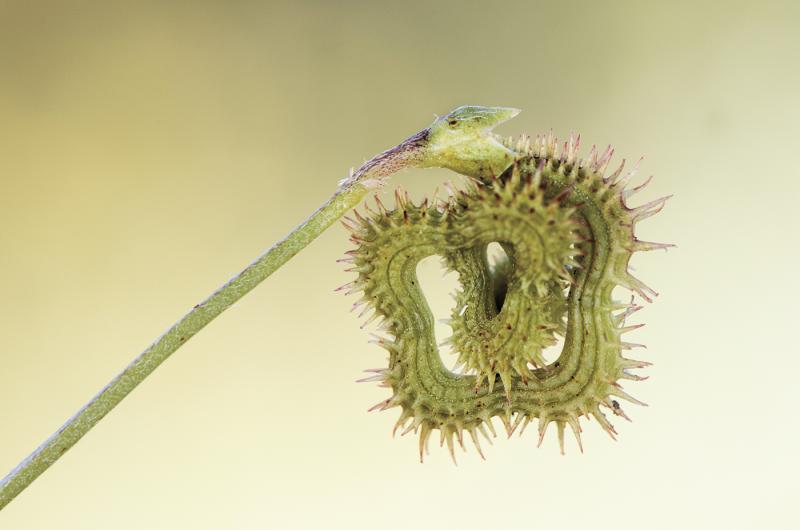They're cute, they're fuzzy and kids love them.
The word “caterpillar” is from the French word “catepelose,” meaning “hairy cat.” The ending “pillar” is from the word “pillager,” or thief, from caterpillars eating farm crops. And caterpillars sure can eat, increasing their body mass by as much as 1,000 times over their short lives. All caterpillars have six legs, the same as adult butterflies. And caterpillars move in a wave-like pattern from the back to the front, like no other animal on earth.
And now you can grow your own hairy caterpillars. No, not larvae, but edible plants that look for all the world like hairy caterpillars. The plant, Scorpiurus muricatus (prickly caterpillar, scorpion’s tail) produces densely haired seed pods that can be hidden in salads as a prank. The young, tender leaves can be steamed or eaten raw. This is a spreading plant that only reaches a few inches high, so it is great as a ground cover that blooms with lots of small, yellow flowers. This annual blooms nonstop from midsummer through autumn. The flowers are followed by tightly curled, hairy seed capsules that look exactly like fuzzy caterpillars. The nutritious leaves make great forage for cattle, horses and sheep.
Sow caterpillar plant seeds by scattering them onto the surface of a prepared seedbed. Gently press the seeds into the soil with your hand. Choose a spot in full sun or light shade. The plants are not picky about soil and seem to grow well even in heavy clay, as long as the soil drains well. These are hardy plants like their cousins, peas, and can be planted a few weeks before your last spring frost. Seedlings will sprout in 10 to 14 days. You can also plant seeds indoors in a pot and grow them in a sunny window. Keep the soil moist but not soggy. Seeds are available from specialty seed companies such as Richters Herbs (www.richters.com, phone: 905-640-6677).
This is an annual legume, so it has a symbiotic relationship with special soil bacteria that form nodules on the roots and capture nitrogen. At the end of the growing season, only remove the stems and leaves, letting the roots decay in the soil and release the nitrogen.
You can save your own seeds by allowing the seedpods to dry out completely on the plant. Spread the seeds out in a thin layer on a sheet of parchment paper. Place the seeds out of direct sunlight in a cool, well-ventilated place. Stir the seeds every day so they dry evenly. Store them away from direct sunlight in a cool spot that stays at a consistent temperature, such as an unheated basement or a cool closet. You can even freeze garden seeds, although freezing isn’t necessary for short-term storage.
Get the kids excited about gardening, and let them in on the prank of growing edible caterpillars. Show them real caterpillars and the butterflies they become.
In a world of war and pandemics, kids, like caterpillars, need a safe, fun garden to hide in and grow up and become the butterflies inside of all of us.























































